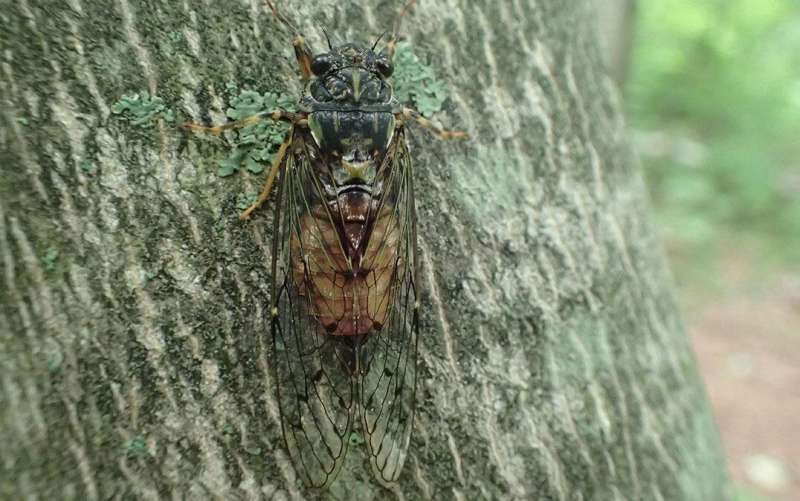New breakthrough in research using insect exoskeletons

Research into insect species can benefit from genetic studies. However, genetic samples can often be difficult to collect in a non-invasive manner, especially when the insects are only found in a particular location or are endangered.
Some insects, such as cicadas, shed their outer hard "exoskeleton" as part of their normal growth in a process known as molting. The structures that are left behind are called exuviae. Cicada exuviae are left on tree trunks and are easy to collect. Exuviae have been used for some genetic research in the past on mitochondria, small and ubiquitous parts of the cell, but no previous studies have been able to isolate and sequence nuclear DNA from exuviae.
When only a very small DNA sample is available, the size of the sample can be increased, or "amplified," by a process known as PCR, or polymerase chain reaction. PCR can make millions of copies of a small sample of DNA to give a large enough sample for detailed study. Now, a team from the University of Tsukuba have tested five different PCR methods to amplify the DNA isolated from exuviae for sequencing.
The team focused on sequencing microsatellites, regions of the genome where a particular DNA pattern is repeated many times. These regions are promising targets because they can be amplified from just a small amount of DNA, and the process is cost efficient. Microsatellites also show a great deal of variation and are already used in molecular ecology studies as effective genetic markers.
First, the team isolated DNA from cicada exuviae and amplified the samples using the different PCR methods. They then compared the results with those taken from adult insects, to check the quality of the samples produced. The best results were seen from the PCR reaction that used an enzyme called TaKaRa LA Taq polymerase, which resulted in a DNA sample comparable to the sample isolated from adult insects. The best results were also seen from fresh exuviae.
"Our work shows that DNA that has been isolated from cicada exuviae can be amplified by PCR, and that cicada exuviae give samples of good enough quality to allow multiple independent nuclear DNA microsatellite marker loci to be genotyped. This approach will be very useful to evaluate population genetic structure and demography of forest insect species in relation to conservation and the ecosystem under ongoing climate change," explains senior author Yoshiaki Tsuda.
This study makes a significant contribution to insect sciences because the methods here are applicable not only to cicadas but also to any other insect species that molt to leave exuviae.
More information: Keisuke Yumoto et al, Efficient PCR Amplification Protocol of Nuclear Microsatellites for Exuviae-Derived DNA of Cicada, Yezoterpnosia nigricosta, Frontiers in Insect Science (2021). DOI: 10.3389/finsc.2021.696886
Provided by University of Tsukuba





















